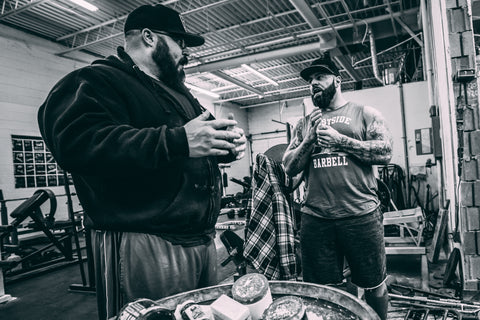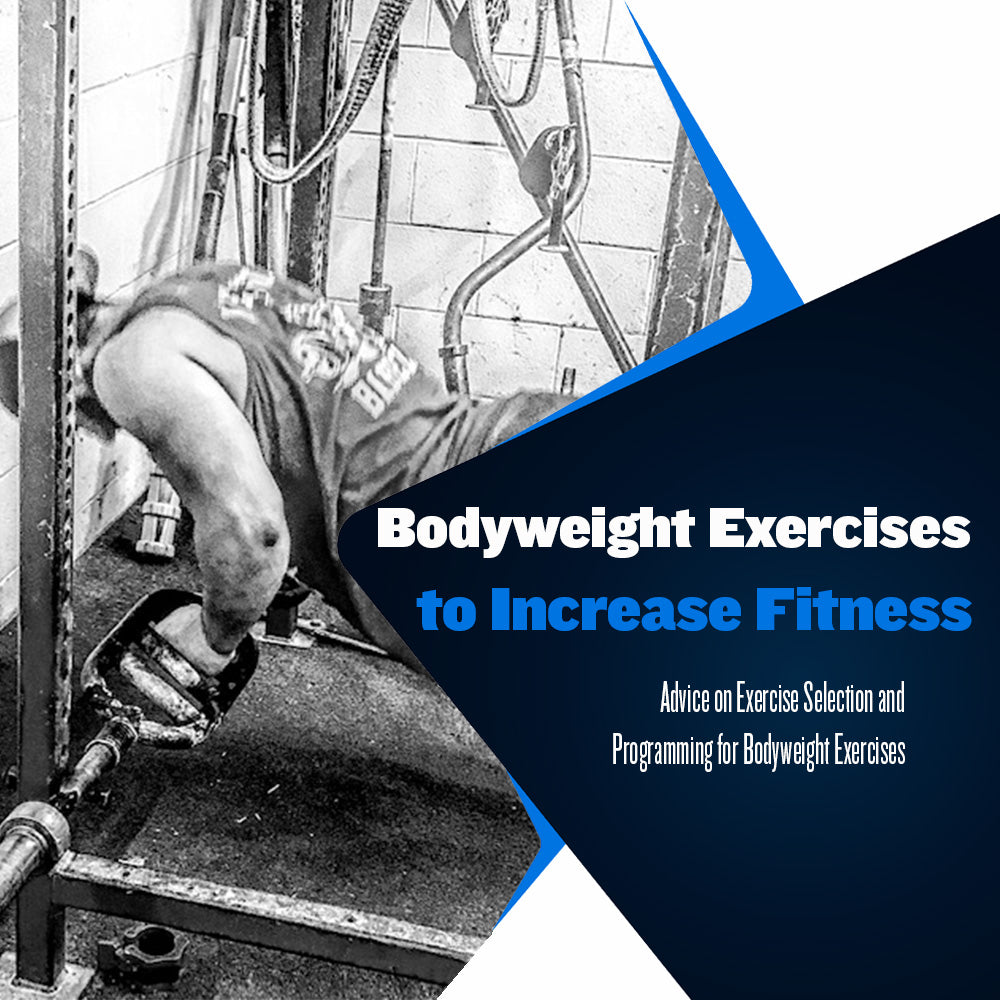Using Bodyweight Exercises to Increase Fitness

Training for strength sports requires an athlete to have access to the right equipment and calls for the training to be intense. We understand that by manipulating the exercises we perform, along with the volume and intensity we perform these exercises at, we can make incredible gains in absolute strength.
However, we cannot always load the bar up with massive weight or squat 405lbs for a set of 20. Sometimes, you need options that improve your physical fitness without the recovery requirements associated with more intense workouts. This is where bodyweight exercises come into play.
Implementing bodyweight exercises allows you to increase your strength, size, athleticism, and mobility. Movements such as pull-ups, sit-ups, push-ups, dips, air squats, Hindu squats, and burpees are some of the oldest exercises we have used to increase physical fitness.
Here are a few bodyweight exercises we recommend for strength athletes to increase their physical fitness and improve their ability to manipulate their body weight in a controlled manner:
Pull-Ups
At Westside, we have always stressed the importance of a strong back. It doesn't matter if you are squatting, benching, or deadlifting; your back strength development will play a vital role in the success of all three.
We perform pull-ups in a few different ways. First is the traditional pull-up using a double-overhand shoulder-width grip. Next, we will perform pull-ups with a slightly closer or wider grip to target other areas of the back (wide grip builds lats, close grip builds upper back/trapezius).
As lifters advance in their pull-up skill, we can add hanging plate weight, increase the difficulty of the exercise by performing side-to-side pull-ups, or focus on the power output of each rep by clapping at the top of the pull.
Air Squats / Hindu Squats
Now that the upper body has been targeted, time to train the legs. Air squats and Hindu squats are two simple exercises that allow you to target different areas of the lower body. A traditional air squat will provide more stimulus to the posterior chain, while the Hindu squat will place more emphasis on the quads.
Adding in some variety to these exercises is easy; all you have to do is make slight adjustments in your stance or your squat depth. With air squats, a wide stance can focus more on the hip adductors, while changes in squat depth can increase the difficulty associated with your Hindu Squats.
No matter which way you perform either of these exercises, you are sure to increase your physical fitness and improve the conditioning of your lower body muscle groups.
Push-Ups
We implemented some back and arm training with the pull-ups; now, it is time to directly target the chest, shoulders, and triceps. Push-ups are one of the oldest exercises known to man. Since the beginning of our lives, we have had to learn to push ourselves up off our stomachs using our arms.
How you perform your push-ups will alter how they target the upper body. By performing push-ups completely level or at an incline or decline, you can focus the strain on the shoulders, pecs, triceps, and upper back / posterior shoulder.
At Westside, we often perform push-ups in a squat rack using a barbell to grip. This helps to reduce the stress experienced by the wrists considering many strength athletes have limited wrist mobility. While some may say these individuals should improve their wrist mobility, we understand their wrist has adapted to handle heavy weight - something more important than "mobility."
Abdominal Training
A strong stomach is crucial if you want to reach high levels of strength and athletic performance. Without adequate trunk strength, you leave your spine at risk of injury and reduce your ability to adequately brace and stabilize your spine, resulting in lowered strength and power output with an increased risk of injury.
At Westside, we train our abdominal muscles regularly. Our athletes will typically train abs from four to six times per week. Now, this does not mean we obliterate our abdominals regularly. However, we try to expose them to targeted stimuli consistently. The abdominal muscles recover quickly, allowing us to train them more frequently.
Our go-to abdominal exercise is standing abs using a strap or a rope attached to a cable machine. To perform this exercise correctly, you must brace your torso from trunk to upper back, allowing only your abdominal muscles to do the work.
Once locked in, you will use your abdominal muscles to "pull" the rope downward, bringing your hands to your upper legs and your torso in a similar position as an abdominal crunch. When performed correctly, you should only feel the strain in your abs, not your upper back or arms.
Burpees
Now that we have finished targeting specific muscle groups with bodyweight exercises, it is time to target all of them simultaneously with a movement known to increase your general physical preparedness significantly; burpees.
Burpees are a great way to end a bodyweight-only workout, considering it acts as a grand finale of sorts with how the exercise incorporates all of the previously trained muscle groups. We recommend performing your burpees at the end of the muscle group-specific work; that way, you get the most out of those exercises.
Ending your training with burpees is a great way to challenge yourself physically and mentally and will significantly impact general physical preparedness and cardiovascular conditioning.
How to Program
Programming bodyweight exercises are much easier than exercises with high levels of volume or intensity. Considering your body is accustomed to moving and manipulating your body weight, you don't have much to worry about in terms of added recovery time or injury risk when programming bodyweight exercises.
Therefore, you have many options when programming your bodyweight training. What would be initially recommended is to take a few of these exercises and begin implementing them into whatever training day they correspond to. For example, push-ups can be added to upper training days, while Hindu squats can be added to lower training days.
Additionally, you can use bodyweight exercises to build extra workouts if you need to focus on a particular muscle group or if you feel you need to improve your general physical preparedness. Considering all of the above exercises are bodyweight only, you can perform any of them for 3-6 sets performing as many reps as possible.
Remember, just because you're only using your body weight doesn't mean it has to be easy. Push yourself and choose movement variations that challenge and work best for you.
Sources:
Simmons, L. (2007). Westside Barbell Book of Methods. Westside Barbell.
Verkhoshansky, Y., & Siff, M. C. (2009). Supertraining. Verkhoshansky.





